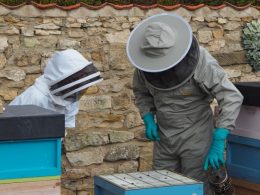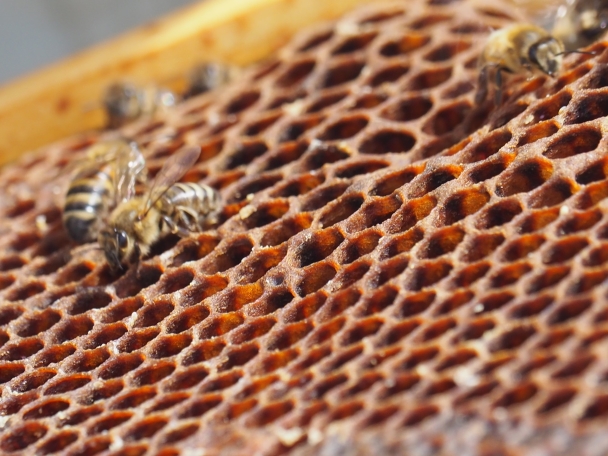
Simon Castleman is the Secretary for the Sleaford Beekeepers Association and has kept his own honeybee apiary in Waddington for six seasons. A week after World Bee Day, educating ourselves on and looking after honeybees who are crucial pollinators for our food, is a discourse that can still continue every day.
Mr Castleman would like to see more mentoring of those who own honeybee apiaries in Sleaford, as despite his experience, there are times where he still wonders what his honeybees are up to.
He advises joining a club for those who want to keep their own apiary, as you get a lot of advice from members.
“You can buy a nucleus or hive of bees if someone is downsizing,” he said.
Mr Castleman has always wanted to keep his own honeybee apiary. “I just find them utterly fascinating.”
“You can keep bees wherever you want and there’s nothing to stop you,” he added.

In a colony of honeybees there are…
Drones
They are male, created if the queen has laid an unfertilised egg.
Workers
These are the females, if the queen has laid a fertilised egg, and they do not breed. They can be made into a queen cell if the honeybees decide to do this.
Queen
The most important member, she lays all the eggs, setting off on a mating flight to look for drone congregation areas.
Facts
The higher honeybees are, the faster they can fly.
The endophallus of the drones blows off when it enters the queen’s spermatheca and they fall to the floor and die. Essentially, sex kills them!
The queen has two hundred and twenty ovaries, whilst the workers only have two.
Mr Castleman also explained how honeybees and bumblebees often get mixed up, or honeybees are seen as wasps. Whilst they can look similar, the yellow stripes on wasps are generally a lot more distinctive.
Wasps are rewarded with sugary syrup from their queen which they become addicted to. In July and August the queen stops supplying this, which explains why they are so desperate for your jam sandwich.
If you’d like to learn more about honeybees or other species, visit the British Beekeepers Association website.
